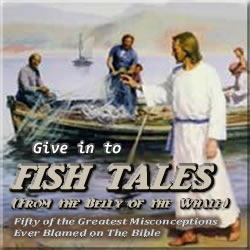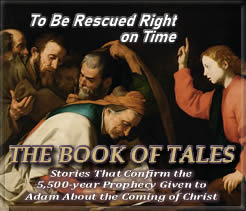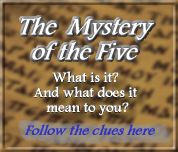Fools, Heretics, and The Zodiac
Questions Concerning the Biblical Purpose of the Constellations
ABSTRACT: Even though The Bible claims that God alone created the stars, and gave each one a name of their own, anyone who even suggests The Zodiac is anything more than Satan’s exclusive domain is instantly branded a fool or heretic. Instead of seeing the stars of Heaven as divine instruments of creation, Christians insist they’re vile tools of Hell to be avoided at all cost. However, a thorough examination of Scripture clearly reveals that not only were the individual stars named by God but the constellations were also designated by Him: Arcturus, Orion, the Pleiades, and the like. What’s more, these stars and constellations weren’t created just to be mere ornaments beautifying the night sky but are, says Scripture, intended to convey signs and wonders to humanity, which expressly declare the glory of God…
IF EVER THERE was a perfect case study in the power of disinformation, this is it. More than any other, the controversy over whether there’s a message in the stars—a.k.a. The Zodiac—presents us with the ideal model of how a great misconception of The Bible can blot out some of the richest aspects of God’s revelation. The only reason it doesn’t appear further up on this list is because it’s also among the most overlooked areas of discussion. If the subject of The Zodiac is even hinted at in casual conversation, it’s instantly dismissed as having anything to say to Scripture-loving Christians.
But as always, this tendency to avoid such a spectacular aspect of God’s creative power has me itching to dive right in. For the life of me I can’t help wondering: “What’s all the fuss about? Does anybody who believes in God as the Creator of the Universe actually think the devil made the stars? And if this Creator God did adorn the Heavens with His starry objects, wouldn’t He have intended them to reveal His divine purpose in some special way?”
With questions like these in mind, let’s examine what popular opinion says about The Zodiac, and from there, we’ll proceed to Scripture.
THE QUESTION of whether or not God created the stars of Heaven for a special purpose hinges primarily on a particular culture’s attitude about His role in the Universe. An early fringe sect of Christianity called Gnosticism rejected the notion that the God of The Old Testament created the Heavens and the Earth, insisting that a lesser Deity created them. This was their way of accounting for evil in the world, which they saw as inherently corrupt and therefore incapable of revealing any genuine truth about God. Thus, the possibility of any revelatory aspects of The Zodiac were negated because it was inconsistent with the Universe as they saw it.
In contrast, other cultures, such as those of medieval Europe, accepted the idea that God created the Heavens and the Earth as His unique vessel. However, despite the fact that God created the Heavens, any message The Zodiac might have communicated to humanity was marred by the intervention of evil entities like Satan and his demonic minions, and so was lost forever in the mists of time.
Somewhere in between these two extremes, then, you’ll find most people’s opinion about The Zodiac.
Of course, even when a person is liable to accept the idea that the stars have the ability to communicate a message to humanity, it’s never thought to be a biblically-oriented message—certainly not one that speaks of God’s control over His purposeful Universe. Instead, it’s a message intended to guide someone toward some merely human-oriented goal, such as which job to take, who to marry, or something to that effect.
Naturally, anyone mounting their campaign of disinformation would instantly dismiss the idea of a divine message in the stars by reminding us of every abuse of this kind, which is clearly condemned throughout Scripture. No doubt they’d point to what happened to the Jews during their Babylonian captivity, to those who’d been desperately seeking a way out of their miserable condition. When they’d grown tired of receiving words of truth the Lord was offering them, they couldn’t resist the temptation to seek guidance from other sources. But no sooner had they done so than they received a grim warning from the prophet Isaiah:
You’ve become weary because of all the false advice you’ve been seeking. Have it your own way then. Let the astrologers, the stargazers, and the fortune tellers try and save you from all the things that are about to come upon you. Look at how you’ll all be reduced to stubble. The fire will burn you, and you’ll be quite unable to deliver yourselves from the power of the flame. Isaiah 47:13-14
By hammering away at every abuse, such as those just described, one can’t help but achieve the desired result. Above all, never allow anyone to even consider the possibility that God could’ve intended there to be a relationship between the written message in The Bible and the pictorial message in The Zodiac.
So goes the verdict: Think you see a message in the stars? Then you, too, should be ridiculed as a fool or condemned as a heretic. Or, at best, you should be written off as a nut.
But wait; are you absolutely sure that’s what the God of The Bible wants? Just because so many have distorted the meaning of The Zodiac to serve their own selfish purposes, might there actually be more to this picture than meets the eye?
Story Continues Below
Says Richard Price—the founder and CEO of Academia.edu—on his podcast In Depth With Academia:
Fish Tales (From the Belly of the Whale): Fifty of the Greatest Misconceptions Ever Blamed on The Bible is:
To hear Price’s book review of Fish Tales (From the Belly of the Whale), CLICK HERE.
To hear Kent and Zen Garcia talk about correcting biblical misconceptions, from June 23rd, 2021, CLICK BELOW.
Story Continues From Above
FORTUNATELY, the Scriptures themselves are always capable of providing the truth concerning such important matters. Let’s look at them to see if they can provide us with an antidote against the poison of latch-isolate-and-repeat.
To begin with, the prophet Amos told us: “Seek Him Who made the Seven Stars (referring to the Pleiades) and Orion.” (Amos 5:8) The psalmist said: “God knows exactly how many stars there are, having given each and every one a name of its own.” (Psalm 147:4) And when Job pondered the majesty of God, he declared:
It’s God Who sealed up the stars and He alone Who spread out the Heavens, Who made Arcturus, Orion, and the Pleiades. God does great things beyond our understanding; yes, and wonders without number. Job 9:7-10
The word “wonders,” from the Hebrew word pala, describes things that are, by implication, marvelous, difficult, or hidden.
So, if it really was God Who created the stars, and not the devil, then why did He place these wonders—with all their marvelously difficult and hidden meaning—in the night sky?
And God said, “Let there be lights in the firmament of the Heaven to divide the day from the night; and let them be for signs and for seasons, and for days and for years.” Genesis 1:14
Right from the start, then, God didn’t create the stars just to mark the transition from day to night, to determine one season from another, or to denote which year we were living in. He also created them to act as “signs.” In fact, the first time the Scriptures refer to a “sign,” it’s used in relation to the stars God placed in the Heavens.
According to Strong’s Exhaustive Concordance, the Hebrew word for “sign” is owth, which means a “signal” (literally or figuratively), as a “flag,” “beacon,” “monument,” “omen,” or “evidence.” By using this word owth, to describe God’s purpose in creating the stars, The Bible clearly conveys the idea these signs were designed to reveal something very specific. So, what is God’s specific message displayed in these signs?
King David, in writing Psalm 19, said:
The Heavens declare the glory of God, and the firmament reveals His handiwork. From day to day, it speaks forth; night after night, it displays knowledge. There’s no place on Earth, where speech and language exist, that its voice isn’t heard. Its message resounds throughout the whole world, and its discourse reaches to every corner of the globe. Psalm 19:1-4
Interestingly enough, the Hebrew word here for “knowledge,” which the Heavens are said to display each night, is a word that’s derived from the root word yada, a unique word that conveys a variety of meanings. It speaks of the ability to learn something through observation, including the discovery of something to be understood figuratively, literally, euphemistically, and inferentially (particularly via recognition through careful consideration). And it’s a knowledge that comes as the result of a declaration of instruction and that requires discernment in receiving that instruction.
Based on this, then, we’d have to admit that God Himself expected us to pay attention to what He was trying to convey via His starry messengers. So what could that message be? Is it a message intended for everyone? Or is it some special revelation that only an elite few will be able to understand?
Let’s resume the task of piecing this puzzle together.
REMEMBER: “The Heavens declare the glory of God.” What’s the glory of God?
The Apostle John said, “The Word became flesh and dwelled among us. We’ve seen His glory, the glory of the one and only Son from the Father, full of grace and truth.” (John 1:14) Confirming this, the writer of The Book of Hebrews declared, “The Son is the radiance of God’s glory and the exact representation of His being.” (Hebrews 1:3)
So, if Jesus is the glory of God, then it follows that the Heavens should declare Jesus, the Son of God.
Sure enough, as we piece together the puzzle, we do find that the message conveyed in The Zodiac reveals the story of Christ, the Redeemer. In fact, when we look at the evidence—both scripturally and astronomically—we find a perfect correspondence with the symbolism in each dimension of God’s creation.
The most graphic example of this symbolic correspondence is revealed when we look at the Four Living Creatures described in The Book of Revelation and compare them with their scriptural counterparts in The Old Testament. To do this, let’s begin in the second chapter of The Book of Numbers:
The Lord spoke to Moses and Aaron, explaining that, with the Tabernacle at its center, all the tribes of Israel are to set up their camps around it, with every tribe marking their camp with the standard according to his father’s name. Numbers 2:1-2
In the case of Judah, to the east, their standard was that of a lion; to the south was Reuben, whose standard was a man; to the west was Ephraim, whose standard was a bull; and to the north was Dan, whose standard was an eagle, or, its natural enemy, a snake or a scorpion.
Next we turn to the way these standards of the four tribes of Israel aren’t grounded just in scriptural terms but also in astronomical terms. And we find this in a place where most Christians would never think to look—a Jewish synagogue. More specifically, we find it in the mosaic floor inside the Bet Alpha Synagogue, constructed in northern Israel around the sixth century. There, a zodiacal wheel portrays each of the four cardinal points, in correspondence with each of the four chief tribes of Israel: There’s the lion of Judah, next to Leo; the man of Reuben, next to Aquarius; the bull of Ephraim, next to Taurus; and the scorpion of Dan, next to Scorpio. A picture of this zodiacal wheel can be seen on page fifteen of the book The High Holy Days. This floor plan even depicts the four cardinal signs of The Zodiac in relation to the months we’re so familiar with: Leo with July-August, Aquarius with January-February, Taurus with April-May, and Scorpio with October-November.
The real significance of this association of imagery, between the chief tribes of Israel and their zodiacal counterparts, lies in the way it corresponds with the imagery in Revelation, where John describes four Living Creatures around the throne of God. In fact, four angels, who each bear a striking resemblance to a lion, a man, a bull, and an eagle—angels who, say theologians, also correspond with each of the four Gospels, which in turn each represent one of four unique qualities of Jesus Christ.
What do have so far, then? Four tribes of Israel; four signs of The Zodiac; four Living Creatures; four Gospels; four qualities of Christ.
Put it all together, and what have we got?
We’ve got Matthew’s Gospel of Christ as King corresponding with Judah’s lion of Leo; Luke’s Gospel of Christ as Son of Man corresponding with Reuben’s man of Aquarius; Mark’s Gospel of Christ as Servant corresponding with Ephraim’s bull of Taurus; and John’s Gospel of Christ as Son of God corresponding with Dan’s eagle, or in this case, its enemy, the scorpion of Scorpio.
All in all, I’d say these interwoven strands of symbolism weave quite a remarkable tapestry that reveals just how The Zodiac really does “declare the glory of God.”
OF COURSE, there will be those who insist this correspondence is completely invalid on the grounds that the names and imagery of the constellations aren’t biblical, citing the notion that they were handed down to those sixth-century Jews from the Greeks and Romans. However, I’d remind them that these details had actually been handed down long before that time. If you’ll recall, Job was cited as already calling the constellations by their names—Orion, Arcturus, and the Pleiades—at a time that predated the Greeks and Romans by more than five centuries.
So from whom did Job receive this knowledge of the names of the constellations? As it so happens, he received it from a book written by a man The Bible says walked and talked with God. That man was Enoch; and from his conversation with God, we learn some things very pertinent to our discussion. Said Enoch:
And now, my children, I know all things, because I heard it from the Lord Himself, and have seen it with my own eyes… What I learned, I wrote in books… I measured and described the stars—a countless multitude. Who knows their revolutions and which direction they’re going? Not even the angels know how many there are, but I’ve written down the names of them all. The Secrets of Enoch 40:1-4
So much for the alleged original contribution of the Greeks and Romans. Compared to Enoch, they’re Johnny-come-latelies.
NOW, IN LOOKING at The Zodiac in a way that most Christians rarely if ever do, our next stop involves a similar activity. We’ll next be looking at The Sphinx and The Great Pyramid of Giza.
Certainly most everyone is familiar with the Sphinx of Egypt. But what most aren’t aware of is the Great Sphinx isn’t just one megalith among several located in the Giza Pyramid Complex. It’s also a symbol of great significance at such sacred sites as the Temple of Esneh, in Upper Egypt.
In his book, The Witness of the Stars, E.W. Bullinger says that painted on the ceiling of the Temple of Esneh is something known as The Denderah Zodiac. Unlike most images of The Zodiac, though, this one contains an unusual feature: This Zodiac includes the tiny image of the Sphinx—an image that just happens to be located between Virgo the Virgin, and Leo the Lion. According to Bullinger, the word sphinx means to “bind together.” Taking this meaning, then, together with the location of this image of the Sphinx, Bullinger believes the Denderah Zodiac is revealing something our modern Zodiac, which begins with Aries the Ram, no longer reveals. It’s telling us that The Zodiac should begin with Virgo and end with Leo.
In short, the real message contained in The Zodiac is the story of Christ, in terms of the dual aspects of His Coming to Earth. First, He came by way of the virgin of Bethlehem, as the suffering servant of God, typified by Virgo, and second, by way of the lion of Judah, as the righteous instrument of God’s wrath, typified by Leo.
In this, we again discover an uncanny correspondence between the gospel in the stars and the gospel in the written word.
One final piece to add to the puzzle: Job said, “By His Spirit, God has garnished the Heavens; His hand has formed the crooked serpent.” (Job 26:13) According to biblical scholars like Bullinger, among the few who’ve dared to speak out on this subject, we’re told that Job was referring to the constellation of Draco the Dragon, a constellation so immense that it stretches across a third of the expanse of the night sky. How interesting, then, that John the Revelator said:
And another sign appeared in Heaven, and look, a great fiery red dragon … and with his tail, he drew a third of the stars of Heaven and threw them to Earth. Revelation 12:3-4
What’s more, this constellation of Draco was well known in ancient times to have contained a star called Thuban, which, between four and six thousand years ago, was famous for being our North Star. Little wonder that this Dragon Star was used by the builders of The Great Pyramid of Giza to orient its entranceway to true north. In making this choice, the architect is said to be conveying the message that, prior to God’s salvation effort via the death and resurrection of Christ, humanity was utterly dominated by Satan’s influence, which is typified by the downward slope of the passage.
In view of such an avalanche of provocative connections, we can’t help but wonder: How could such a remarkable aspect of God’s revelation become obscured by such a dense cloud of suspicion? Just try naming another arena of life that reveals more about God’s power than His communicating a universal message of redemption to an onlooking world. Considering the importance of such a message, what greater enemy could there be to the powers of darkness, which is to say, the devil and his minions? What could be more important to these powers than to do all they can to distort and confuse this message of the glory of God, declared from Heaven itself?
I guess when you look at it that way one of the greatest mysteries in God’s creation doesn’t seem so mysterious after all, now does it?








